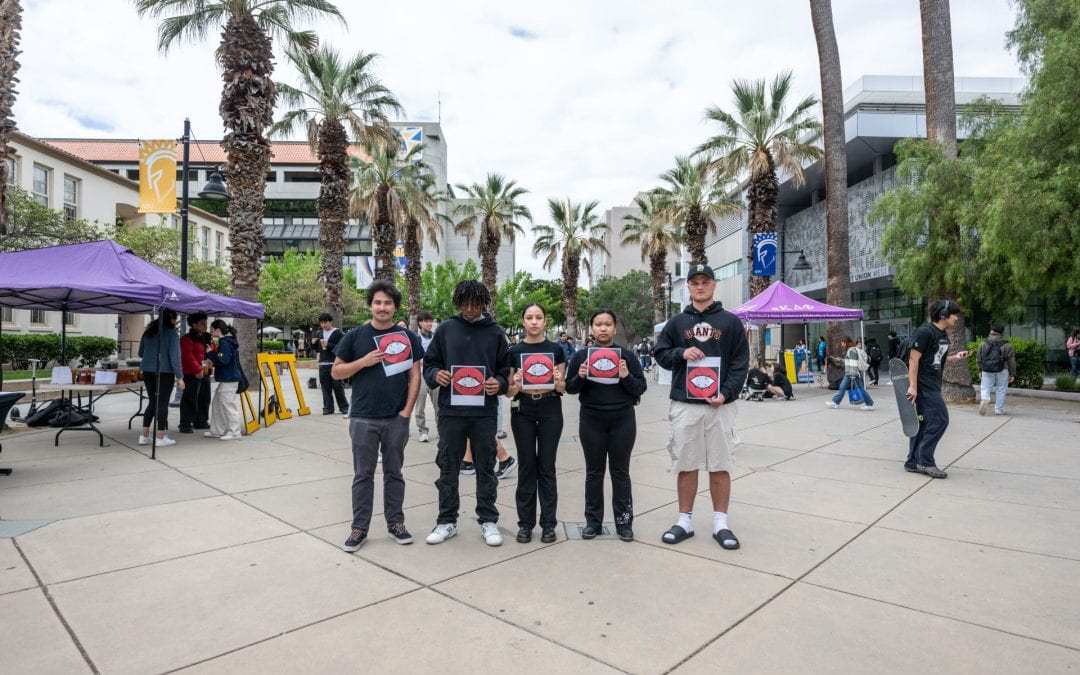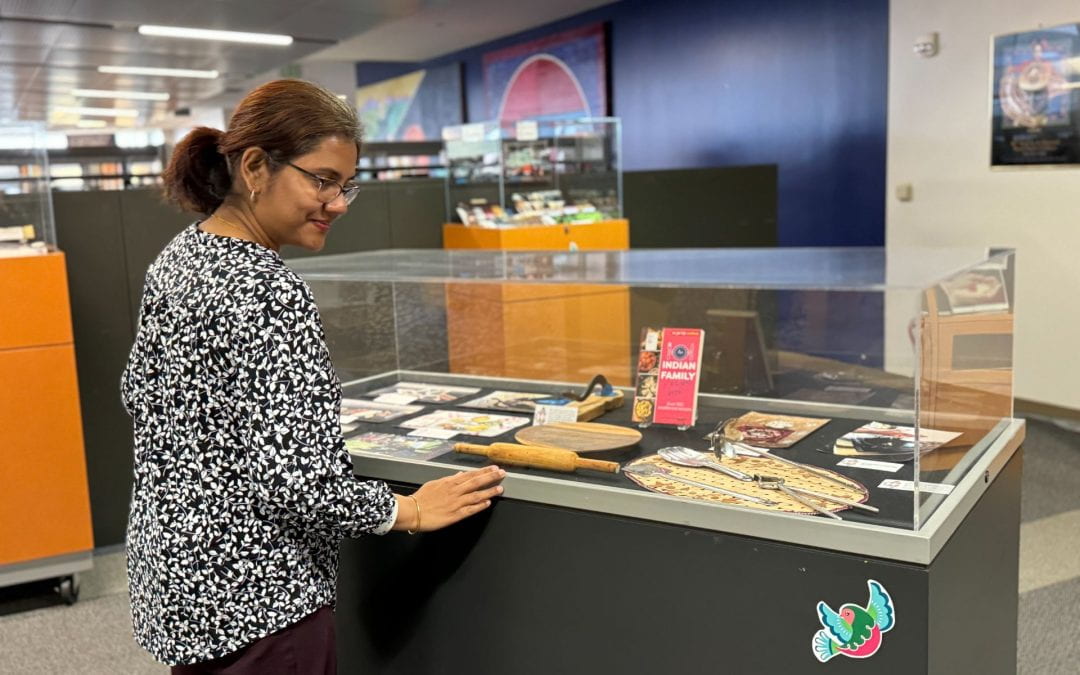Faculty, Graduate Students Partner With the Muwekma Ohlone Tribe to Launch “Reclamation” Exhibition at New Museum Los Gatos
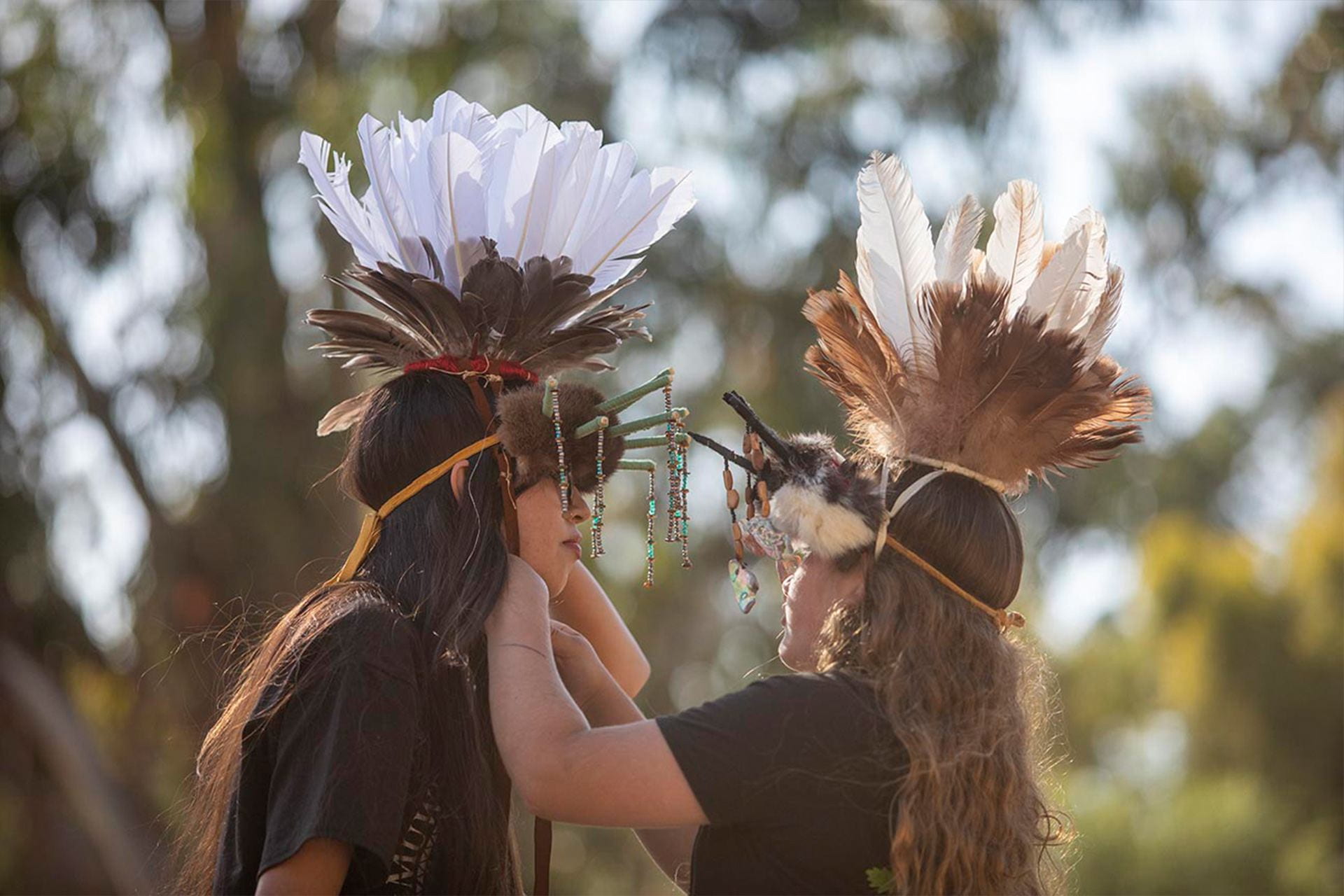
Alexandra Garcia, ’21 BA, ’23 MA Applied Anthropology, was unfamiliar with the Muwekma Ohlone Tribe until she took her first archeology class at San José State University. Raised in San José’s East Side, she had no concept of her hometown’s tribal history, which spans more than 10,000 years of indigenous community-building through stewardship, dance, language and rich cultural traditions.
This fall, Garcia’s graduate research will contribute to “Reclamation,” an exhibition launching on Nov. 4 at the New Museum of Los Gatos (NUMU) that explores the Muwekma Ohlone’s rightful place as a federally-recognized tribe. The exhibition is a partnership between NUMU, San José State’s Anthropology Department, the nonprofit Mosaic America and the Muwekma Ohlone Tribe. It features work by tribal photographer Kike Arnal as well as the Mosaic Atlas Cultural Mapping project, an interactive map that highlights places of significance to local indigenous peoples, and supplementary bilingual curriculum for fourth- and fifth-grade classes prepared by Cesar Villanueva, ’23 MA Applied Anthropology.
Garcia learned the present-day Muwekma Ohlone Tribe is comprised of all the known surviving American Indian lineages aboriginal to the San Francisco Bay region who trace their ancestry through the Missions San Francisco, Santa Clara and San Jose, and who were also members of the historic Federally Recognized Verona Band of Alameda County. The aboriginal homeland of the Muwekma Ohlone Tribe includes the following counties: San Francisco, San Mateo, most of Santa Clara, Alameda, Contra Costa, and portions of Napa, Santa Cruz, Solano and San Joaquin.
“We appreciate the collaboration with SJSU and NUMU,” said Muwekma Ohlone Vice Chairwoman Monica V. Arellano. “The students have helped us champion our cause, and they bring a different energy and dynamic to our central message: We’ve never left our aboriginal tribal area. I appreciate that they want to share our story. Finally people are listening.”
Unique hands-on experience
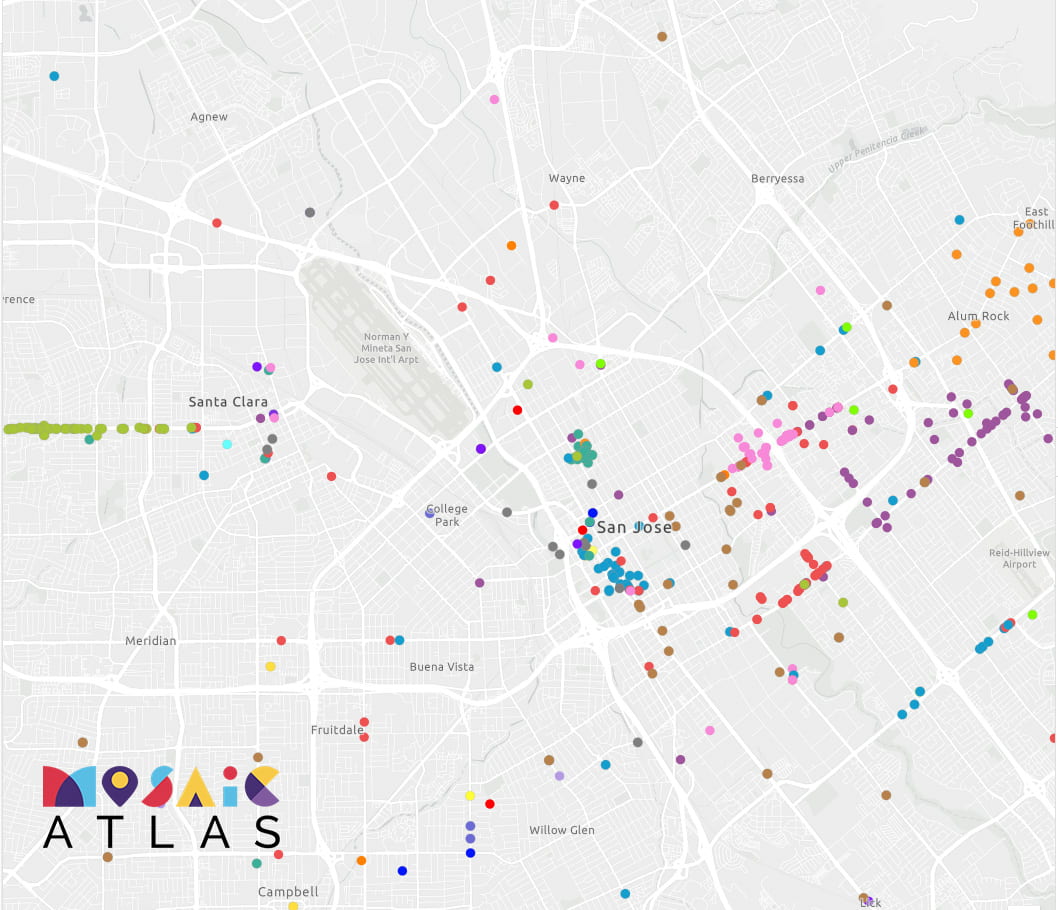
SJSU graduate student Alexandra Garcia is developing a guide to Muwekma Ohlone Tribe sacred sites across the Bay Area as part of the MOSAIC Cultural Atlas project. The dots on the image correspond to images of interest to the tribe. Image courtesy of Alexandra Garcia.
Garcia’s graduate research, which includes a series of oral history interviews with tribal elders and their children, will appear in the digital cultural map and in some of the museum’s educational displays. She hopes the work will live on beyond the nine month exhibition at NUMU.
“I’m hoping that the exhibition and the story map can make this information more accessible to the public, so they can learn about the tribe’s steps toward reclamation,” she said.
NUMU Executive Director Ami Davis, ’08 MA Art History, welcomed the opportunity to partner with SJSU students, faculty, Mosaic America and the Muwekma Ohlone Tribe. She sees the exhibition as an opportunity to open community members’ eyes.
“As the only history museum in Los Gatos, we can help educate the community about the true — and in some cases, untold — stories of the tribe,” she said. “It’s been a real privilege to work with such thoughtful, knowledgeable students from San José State. They’ve helped by interviewing tribal council members and even writing some of the exhibition content. The culture map is going to be another great resource for our audience to get to know some of these sacred areas.”

Julie Dominguez, a member of the Muwekma Ohlone Tribe, uses feathers to adorn traditional regalia. Photo by Kike Arnal.
The exhibition furthers the public’s understanding of the Muwekma Ohlone Tribe in another significant way: through Villanueva’s curriculum, available for elementary educators teaching in English and Spanish. The activities, which mirror the exhibition’s focus on tribal regalia, dance and language, encourage students to reflect, observe and create.
“I’m hoping that the toolkit translations create more accessibility,” Villanueva said. “I hope that by making them available in two languages that it bridges more knowledge and that it’s a good application tool to educate the public and get the message out that the Muwekma Ohlone are here. They were never terminated. They’re resilient.”
Reclaiming history
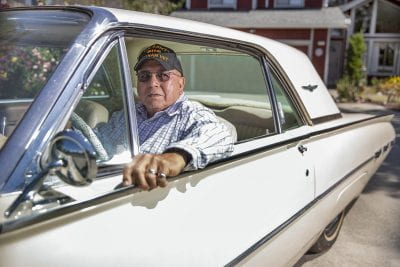
Frank Ruano, a 79-year-old member of the Muwekma Ohlone Tribe from the East Bay, in his collectible 1962 Thunderbird. Ruano was recruited to serve in the Vietnam War at age 18. Photo by Kike Arnal.
Everything about the exhibition, from the cultural atlas to the accompanying bilingual curriculum, the name “Reclamation,” is strategic, said Muwekma Ohlone Chairwoman Charlene Nijmeh.
“Reclamation is a powerful word to use because it asserts our sovereignty and brings that visibility to the forefront,” said Nijmeh. “The tribe is still here. We haven’t gone away, and we’re focused now on leadership, reclaiming our dances and our language.”
Tribal ethnohistorian and retired SJSU faculty member Alan Leventhal said the emphasis is on reclamation because the Muwekma Ohlone were previously federally recognized. The partnership between the Muwekma Ohlone Tribe, San José State faculty and students, and the Los Gatos Museums (Forbes Mill and NUMU) extends back to 1998.
Despite maintaining an active presence in the San Francisco Bay Area, the Muwekma Ohlone, previously called “Costanoan” by anthropologists, were deemed “culturally extinct” in 1925 by UC Berkeley anthropologist Alfred Kroeber. As Leventhal et al. argued, they weren’t simply denied rights: In the eyes of the government, they had been erased by a prominent anthropologist and officials at the Bureau of Indian Affairs (BIA). Between 1996–2002, the Muwekma Ohlone rallied to petition the BIA and federal courts to reevaluate their recognition status.
“This land was never ceded, given up or surrendered by the ancestors of the Muwekma Ohlone Tribe and other descendants of the Verona Band of the Bay Area,” said SJSU Anthropology Chair Roberto Gonzalez. “But because of historical circumstances– most significantly, settler colonialism–here we are, on their territory. It’s important that we acknowledge that we are their guests — and that our University is in the heart of the ancestral lands of the Muwekma Ohlone.”
“It’s important that folks who are not Native American understand and respect the value of the Muwekma Ohlone culture and their efforts to reclaim what was unjustly taken from them. People should learn about their ability to coexist over many centuries in an environmentally sensitive and responsible way with this beautiful region that we live and work in.”
The tribe’s efforts to reclaim their federal status are ongoing — and top of mind to Gonzalez and Anthropology Professor Jan English-Lueck, who advised Garcia and Villanueva as they navigate their roles as anthropologists and liaisons to the tribe. English-Lueck’s research contributed to a 2017 NUMU exhibition entitled “Cement Prairie,” which explored the impact of the forced American Indian Relocation Program spanning the 1950s through the early 1970s.
“It’s a part of the American promise to be inclusive, and our history has often shown the opposite,” said English-Lueck. “There was a very toxic story that indigenous people somehow disappeared and became extinct, which is a very poisonous idea because it erases a whole group of people.”
“We should acknowledge our first peoples, and reconcile the fact that, if we as the next people fail to acknowledge those before us, we’re always going to be strangers in our homeland. I think that’s where healing really needs to happen.”
The exhibition will be available through May 2023.
Visit the New Museum of Los Gatos to learn more about “Reclamation”


